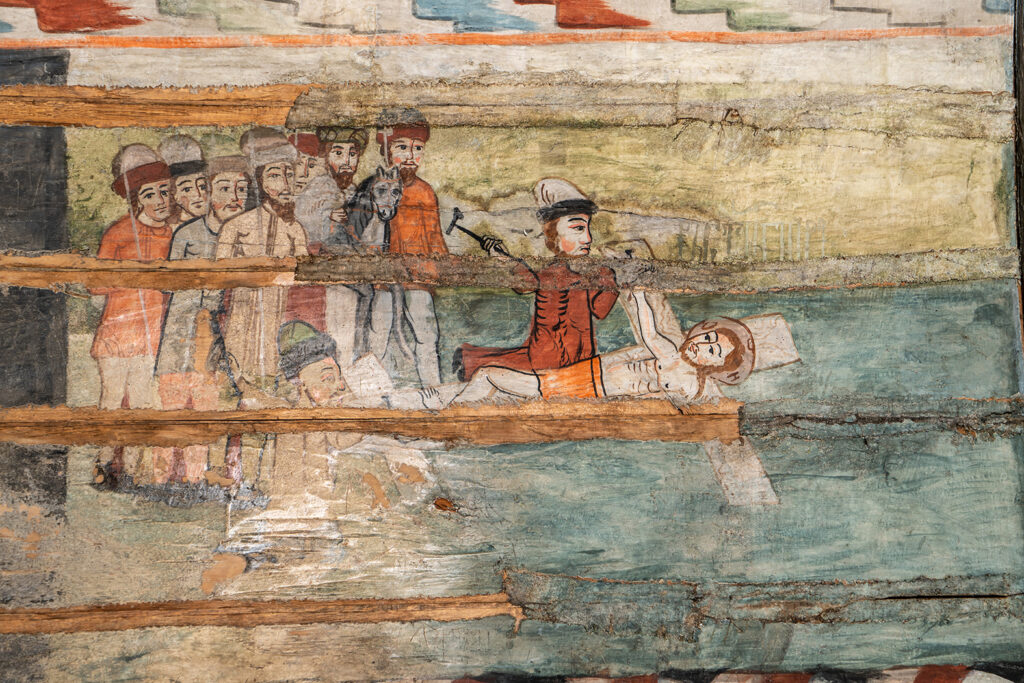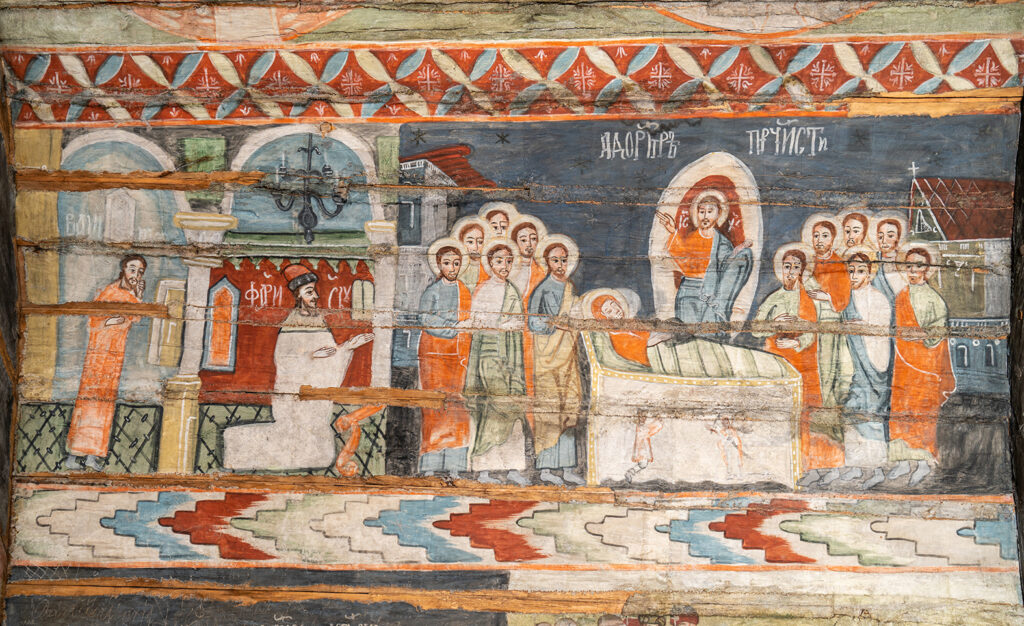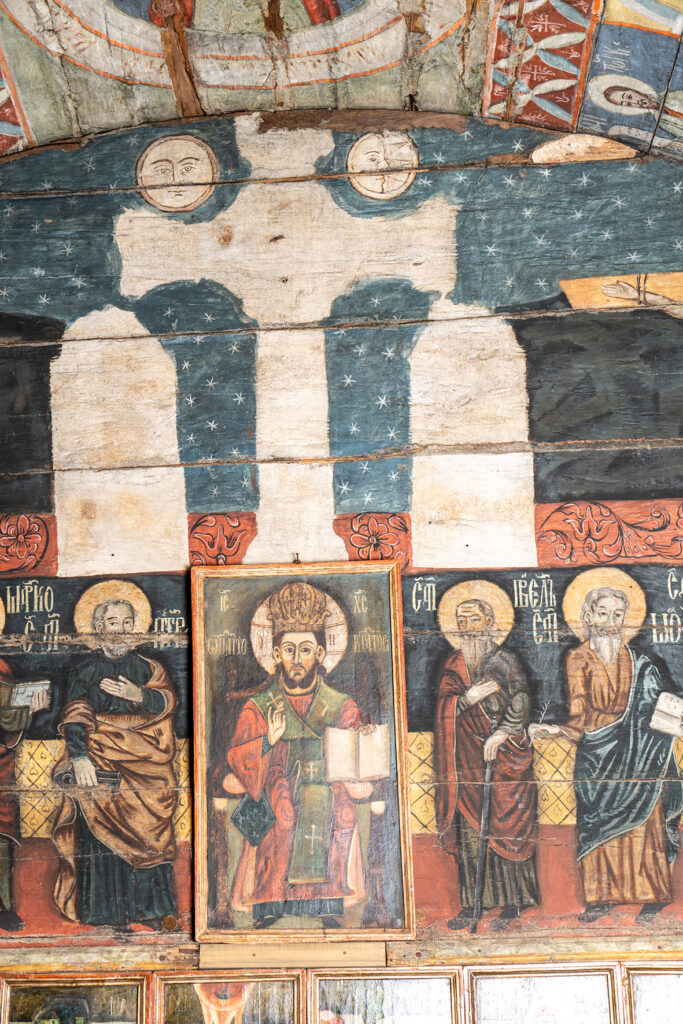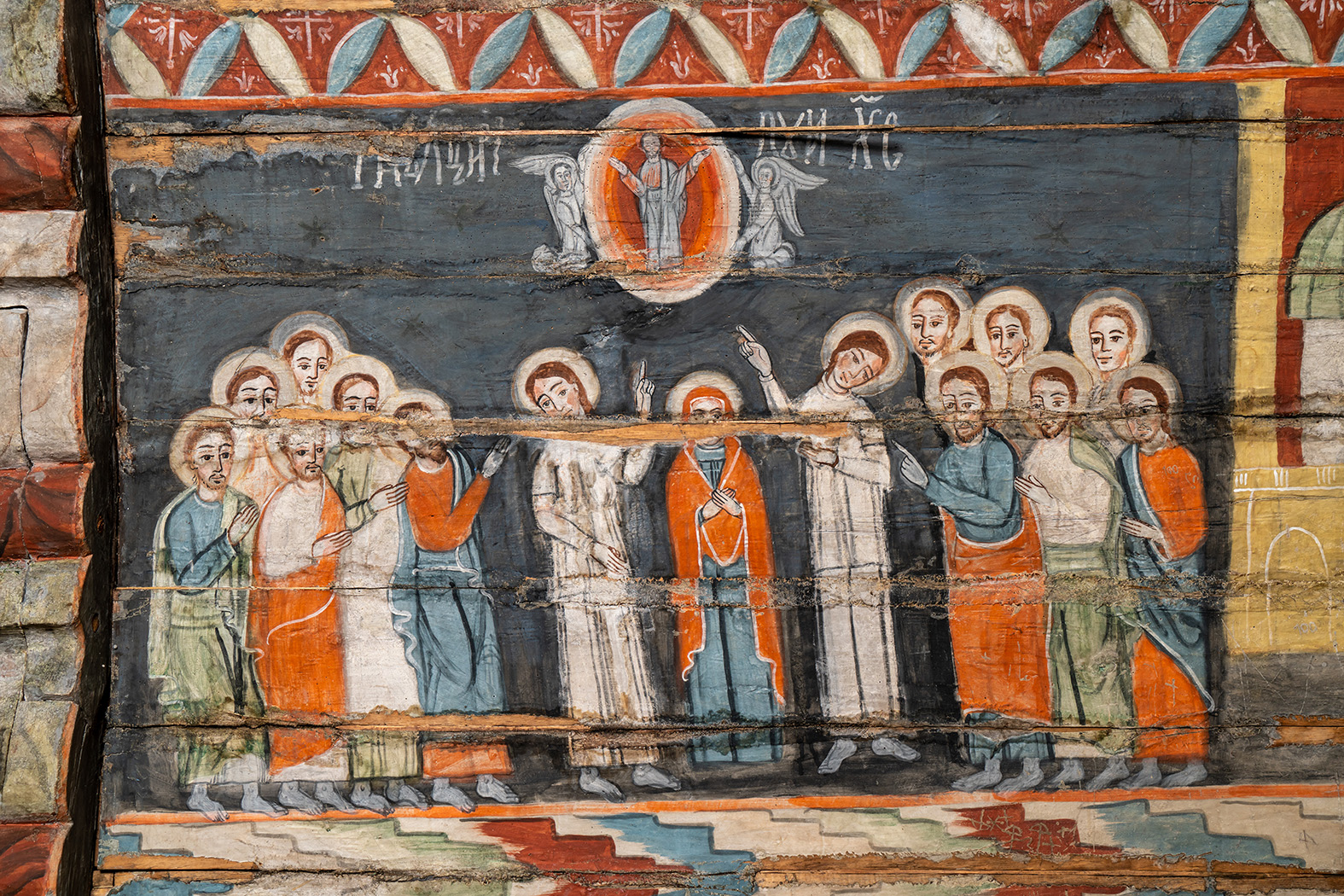The church in Cizer village (Sălaj county), one of the most representative wooden places of worship in Transylvania has a remarkable interior painting, which was recently restored as part of the project “Restoration – Conservation and enhancement of wooden churches Petrindu and Cizer”, financed by the EEA Financial Mechanism 2014-2017, carried out by the Cluj County Council in partnership with the Transylvanian Museum of Ethnography and the Nordic Urban Design Association.
The painting inside the church is executed in tempera (poor quality tempera). The religious scenes represent a rural interpretation of Byzantine school painting. The succession of religious scenes on the walls shows the popular accents, but also the vigour of the painting. The rigorous design is sometimes replaced by a suggestive one, thus creating a style identifiable to the peasants-painters, church painters of the XVIII-XIX centuries. The number and variety of the themes rendered differ from one church to another, the good knowledge of the biblical scenes, of the typical iconography as well as the skill of the painter determining the placement of some themes in the nave, narthex or altar. The painted ensembles are distinguished by a discreet chromatic, the vivid colours being tempered by the use of white, black or grey.
The current project “The Church of Horea – a heritage for the future. Valuing an 18th century architecture monument through virtual reality” has among its initial objectives the scanning of the whole church, including its interior painting, and its presentation through virtual reality applications to the general public. The purpose of this complex action of scanning the painting, without endangering the monument itself, is to facilitate the possibilities of exploring the monument, while considerably expanding the number of potential visitors and thus overcoming the restrictions imposed by limiting the number of visitors required after the completion of restoration work on the church. The exhibition realized within the mentioned project presents on 50 large panels (70×100 cm) a selection of details of the church painting, compact or fragmentary religious scenes, with impact for the visitors who cannot get, for different reasons, to admire the architectural monument in the Ethnographic Park “Romulus Vuia” from Cluj-Napoca.
The above project is carried out by the Transylvanian Museum of Ethnography, together with the Technical University of Cluj-Napoca and the Norwegian association NUDA AS, financed with the support of EEA Grants 2014 – 2021 within the RO-CULTURE Programme.





